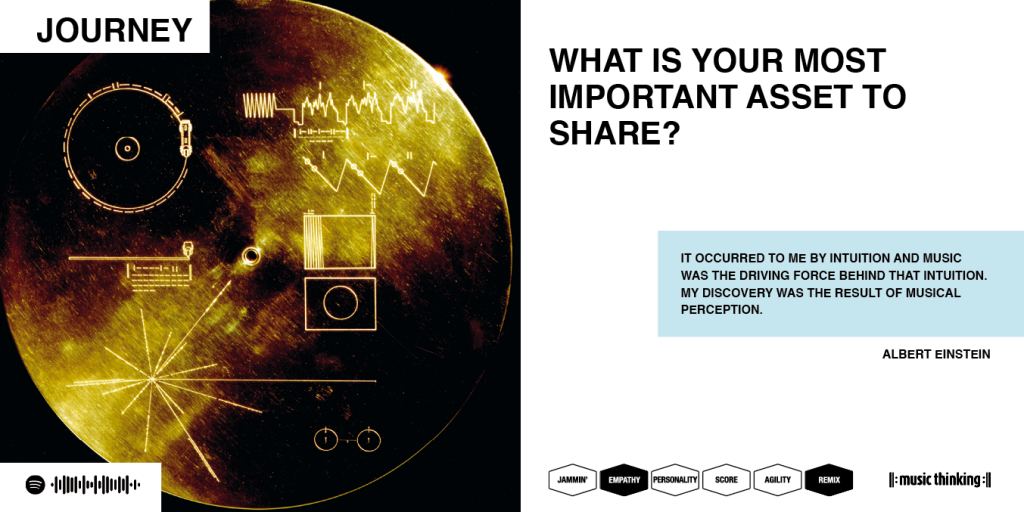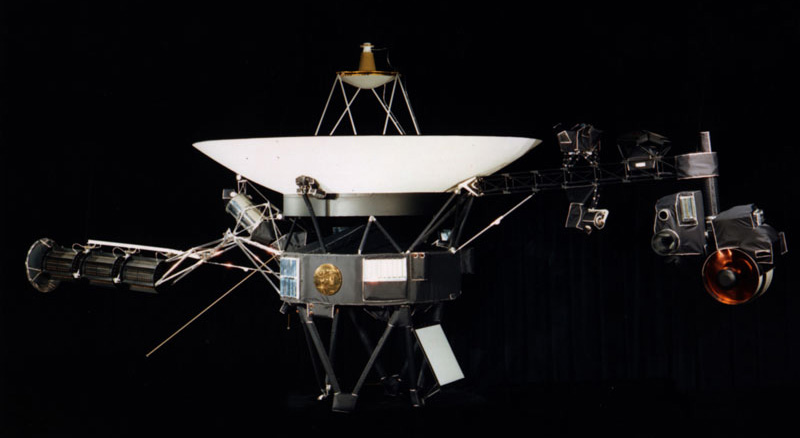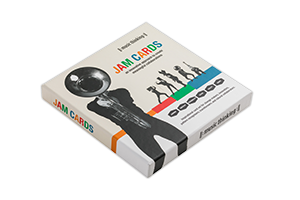
When we talk about moonshots or moonshot projects we talk about something far away but principally, with some effort reachable. In a technology context, it is an ambitious, exploratory and ground-breaking project undertaken often without any expectation of near-term profitability or benefit and also, perhaps, without a full investigation of potential risks and benefits. We face the unexpected, the unknown and hope for the best.
The Journey Card

The essence of the Journey card is to think about what our most important assets are. It means, what is the most important asset that we have to keep when we are going on a journey. This is important when you think about a space mission, but also when we think about our products and services, our companies communication, brand message and the values we want to share with our stakeholders. Stakeholders we know now, but also potential stakeholders of the future.
The picture

In 1977, NASA launched two spacecraft on a grand tour of the solar system and into the mysteries of interstellar space. Attached to each of these probes is a golden phonograph record containing pictures and sounds as a message for extraterrestrial intelligence that might encounter it. Each record is encased in a protective aluminium jacket, together with a cartridge and a needle. Instructions, in symbolic language, explain the origin of the spacecraft and indicate how the record is to be played.
So from a service design perspective, NASA has given instructions for extraterrestrials how to use this record. That is a great job and you should have a look on the website if you would be capable in understanding these instructions. The idea of the golden record was to send the most essential probes of our culture into space, so that extraterrestrials would understand our nature, wow! So the record has been featured in several works of science fiction. In the 1984 film “Starman,” a race of aliens discovers the record and sends an emissary to Earth to learn more about our planet.
The Golden Record consists of 115 analogue-encoded photographs, greetings in 55 languages, a 12-minute montage of sounds on Earth and 90 minutes of music
The music
There is a funny or better interesting story about all the songs and musical piece Dr Carl Sagan has selected. The record contains music from African tribes, Johann Sebastian Bach, Beethoven, Mozart, Japanese Shakuhachi, Indian Raga and Johnny B. Goode from Chuck Berry. Remember we are still in the middle of the cold war, Europe is threatened by the soviet union and Nato is making plans for missiles in West-Germany. This was the time when NASA gave the assignment to a committee led by Carl Sagan to curate the 90 minutes. High-ranking Soviet politicians did everything they could to get the popular Russian song “Moscow Nights” (Podmoskovniye Vechera) included into the project. Alan Lomax, a legendary American folklorist, was asked for advice. He instantly discarded the Russian song and adviced them to include the Georgian song ‘Chakrulo’ instead. So this is the most famous Georgian Song and there is no Russian Song on the record. Funny enough Lomax opposed to including Johnny B. Goode because it was ‘adolescent’. And this time Sagan’s brilliant response was, ‘There are a lot of adolescents on the planet’.
The quote
It occurred to me by intuition, and music was the driving force behind that intuition. My discovery was the result of musical perception.
Albert Einstein, who could play the piano and was a formidable violinist, talking about the driving force of intuition. It is said that when Einstein was thinking about a problem and got stuck, that he then stopped working and started playing the violin. And after playing for a while he moved back to his work with a fresh idea or the solution to the problem. So there is a direct line between, making music, intuition and problem-solving.
The cues
We need EMPATHY to connect with the other, we have to imagine what they look like, what they think and feel. This is tremendously difficult when we talk about someone or something that we have never seen before. We have to think about how they will look to us, how will they interpret our objects, our looks our behaviour. The most important thing is that we take the best we have, or what we can get, collect it, combine it, synthesize it, in other words, make the best REMIX and ship it. There might be an extra cue that could come into play PERSONALITY: If we don’t exactly know how we can have EMPATHY because we don’t know the other side, have not enough data, information or narratives; we have to focus on what we are, what makes us human (a company, yourself) and try to communicate this as clear as possible. So the cue PERSONALITY can come into play when we are not sure about the outside world because we first have to be sure about who we are.
Some inspirational links:
NASA Jet Propulsion Laboratory – Voyager
Download the Voyager Eyes App and ride along with the Voyager
Complete Playlist of the Golden Record (Spotify)
Albert Einstein plays Mozart Sonata in B-flat KV378
Music Thinking Jam Cards
 An inspirational card set for change makers, pattern recognisers, innovators, transformers and natural collaborators. The Jam Cards consist of 38 inspiration cards and six cue cards. All inspiration cards have a keyword, a visual and a sonic trigger, a trigger question, an inspirational quote, and six cues that connect with the Music Thinking Framework. You can use the cards from a strategic point of view, knowing what you want or need and a serendipity approach open to everything that will happen. ‘Music Thinking’ lets people work and play together in a new way with inspirations from the rich world of music.
An inspirational card set for change makers, pattern recognisers, innovators, transformers and natural collaborators. The Jam Cards consist of 38 inspiration cards and six cue cards. All inspiration cards have a keyword, a visual and a sonic trigger, a trigger question, an inspirational quote, and six cues that connect with the Music Thinking Framework. You can use the cards from a strategic point of view, knowing what you want or need and a serendipity approach open to everything that will happen. ‘Music Thinking’ lets people work and play together in a new way with inspirations from the rich world of music.
Order the Music Thinking Jam Cards.
You can order the jam cards via your local bookstore (worldwide) and have a nice chat with the people there and try the cards right away, or just buy them directly at BIS Publishers. Yes, you can also find them at Amazon.com, Amazon.de, and Bol.com
